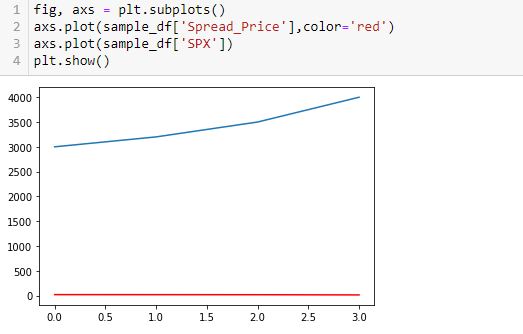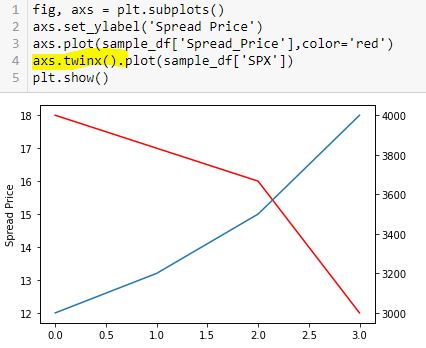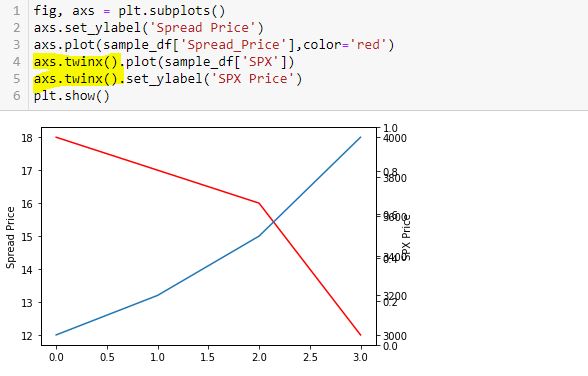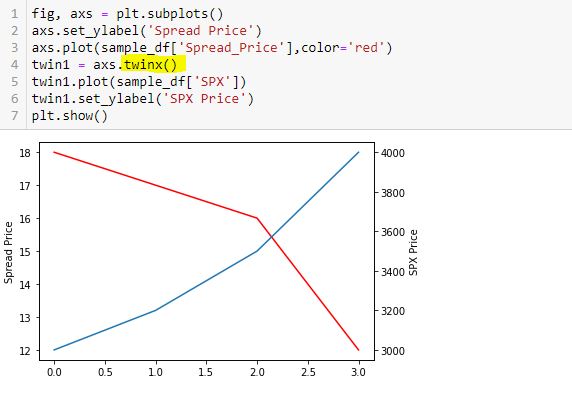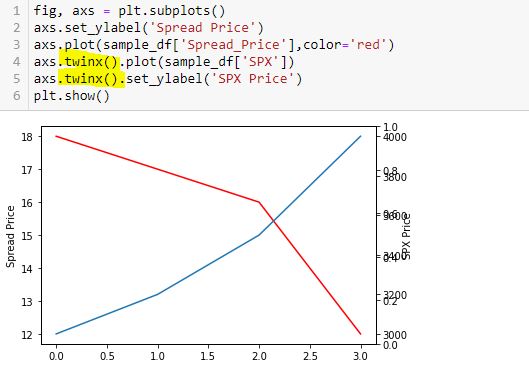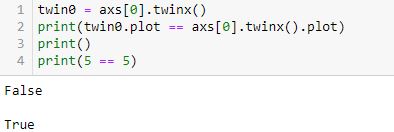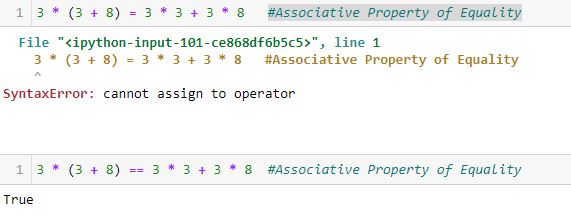Lessons on Twinx()
Posted by Mark on August 26, 2022 at 06:48 | Last modified: May 17, 2022 15:57I spent the whole day yesterday trying to figure out why I got overlapping axis labels on a secondary axis for my graph. I want to document what I’ve learned about the twinx() function.
Let’s start by creating a df:
Now, I’m going to add two lines. Spread price will be in red and SPX price will be in blue:
This doesn’t work very well. In order for the y-axis to accommodate both, the spread price looks horizontal since its changes are so small relative to the magnitude of SPX price.
To fix this, I will create a secondary y-axis on the right side:
Now, I label the right y-axis:
Whoa! This generates an overlapping set of y-axis labels on the right going from 0.0 to 1.0. What happened?
Here is a correct way to do this:
Thinking substitution is what confused me. I saw this solution online but got confused because I interpreted L5-L6 as substitution from L4 and had trouble wrapping my mind around it. I therefore chose to do it the long way:
This is not the way Python works. Python is not algebra.
Had I questioned this [which I didn’t], I could have verified with a truth test:
L2 is False (unlike L4, which is obviously True).
twinx() creates a new y-axis each time it is called. Calling more than two can lead to the overlapping labels.
Furthermore, a function or method like twinx gets called each time the function/method name is followed by (). When you see “name()”, you are seeing a function/method call. This is not something I ever read in documentation or in Python articles. To me, this most definitely is not obvious. The third and fourth code snippet above include twinx() once and twice, respectively. This is why the fourth has an overlapping y-axis. The fifth code snippet has twinx() just once: no problem.
Anytime I see a single equals sign, it might help to think “is assigned to.” The variable will retain said value until something dictates otherwise. No substitution is taking place and no properties of equality necessarily apply.
Once more for emphasis:

